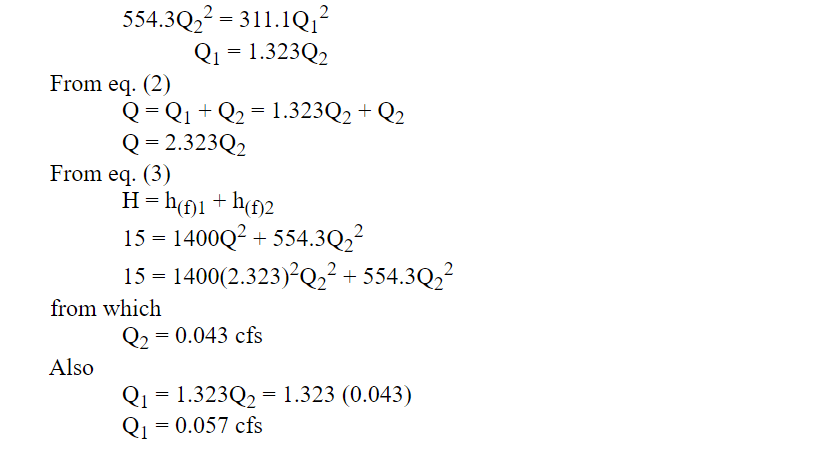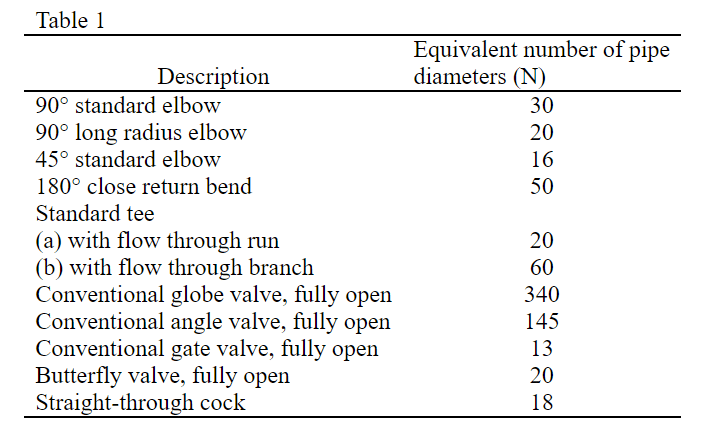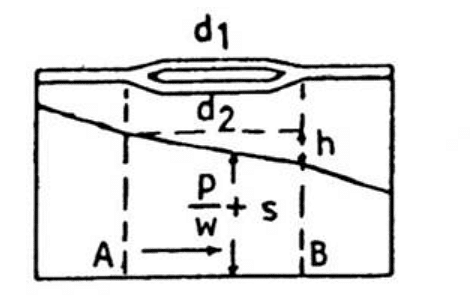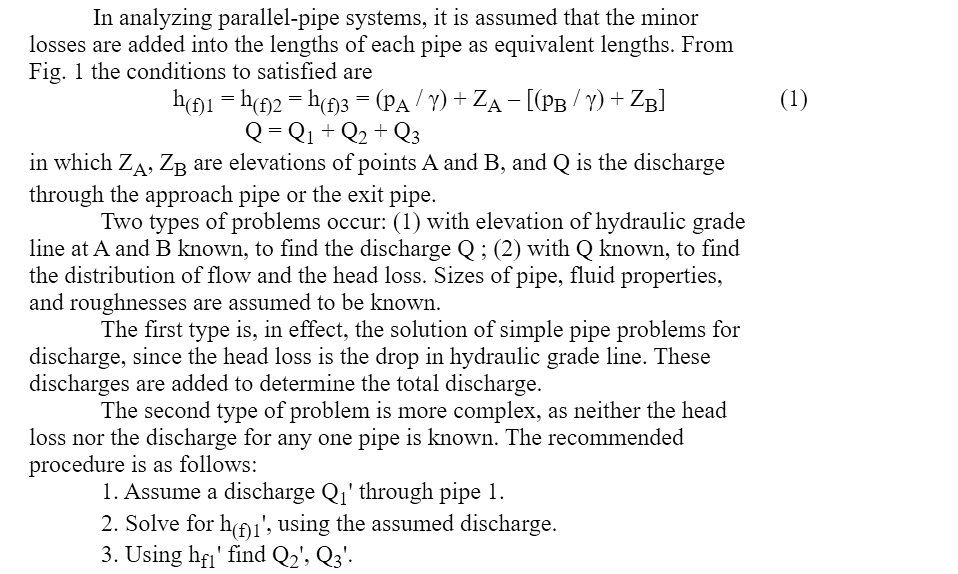Questions for Flow Through Pipes | Fluid Mechanics for Civil Engineering - Civil Engineering (CE) PDF Download
Q1: Determine the kinetic-energy correction factor for the given turbulent flow velocity distribution described by Prandtl's one-seventh-power law, expressed as:

where 'y' represents the distance from the pipe wall, and 'r0' stands for the pipe radius.
Sol:

Q2: Water is discharged from a large reservoir through a straight pipe of 3 in. diameter and 1200 ft long at a rate of 12 cfm. The discharge end is open to the atmosphere. If the open end is 40 ft below the surface level in the reservoir, what is the Darcy friction factor? Losses other than pipe friction may be ignored.

Sol:

Q3: Water is discharged from a reservoir through a pipe, 300 ft long, branching into two pipes of 200 ft length each. All the pipes are of 2 in. diameter and horizontal. The branched pipes are uniformly perforated, one of them being blocked at the end, while in the other one-half the water entering it is drawn off through its end. If the water surface in the reservoir is maintained at 15 ft above the center lines of the pipes, what is the discharge through each of the branched pipes? The Darcy friction factor is 0.006.

Sol:




Q4: a) What is the flow rate for water at 15°C in a 25–cm cast iron pipe when the head loss is 5.0 m in 300 m of pipe?
b) What is the flow rate for water at 15°C in a commercial steel pipe, 250–mm diameter, when the head loss in 300 m of pipe is 5.00 m?

Sol:






Q5: In figure 1 the open reservoirs are 20 m apart in elevation. Pipe 1 is 60 cm in diameter and 200 m long. Pipe is 30 cm in diameter and 100 m long. Both are made of commercial steel. The entrance to pipe 1 is square (kL = 0.5) and the junction between pipes 1 and 2 is an abrupt contraction. Assume the water viscosity to be 10–6 m2/s. What is the flow rate ?

Sol:



Q6: A solution (viscosity = 2.4 cp, sp. gr. =1.2) is to be pumped from a storage tank to an overhead tank, both open to the atmosphere. The pipe line, 2.067 in. diameter, is 160 ft long, and the fittings include three 90° standard elbows, one tee-piece, and one conventional globe valve. The vertical distance between the surface levels in the tanks is 80 ft. If the solution is to flow through the pipe at 6 fps, what horse-power will be consumed by the pump at 50 per cent efficiency? The roughness of the pipe may be assumed to be 0.0018 in.


Sol:



Q7: Two water pipes, 12–in. and 6–in. diameter, of the same length are coupled in parallel and together are to deliver 3 ft.3 per sec. Find the loss of head per mile if f = .0075.

Sol:


Q8: Branched Pipes: The figure shows a pipe, dividing at D to supply two other reservoirs. Let the diameters of the three pipes AD, DB and DC be d1, d2, d3 and their lengths L1, L2 and L3 respectively. Let H1, H2, H3 be the water levels of the reservoirs at A, B and C. If the branch pipe to B be closed, ADC forms two pipes, d1 and d3 in series; similarly if the branch pipe to C be closed, ADB forms two pipes d1 and d2 in series, the hydraulic gradients in each case consisting of two straights, intersecting at D, the steeper over the smaller pipe. But opening both branches to B and C will depress the hydraulic gradient at D to some level H. The head lost at entry and the velocity head in each pipe and other local losses will be neglected: they must be corrected for afterwards if they are appreciable compared with the friction losses, as they will be if the lengths are short. In the figure, H1 = 200 ft. , H2 = 151 ft., H3 = 182 ft. above datum; d1 = 15 in., d2 = 9 in., d3 = 12 in. L1 = 2000 ft., L2 = 3000 ft., L3 = 3600 ft. Taking f = .005, find the discharges in the three pipes, neglecting all small losses.

Sol:


Q9: A combination of two or more pipes connected as in Fig. 1, so that the flow is divided among the pipes and then is joined again, is a parallel-pipe system. In series pipes the same fluid flows through all the pipes and the head losses are cumulative, but in parallel pipes the head losses are the same in any of the lines and the discharges are cumulative. In Figure 1 L1 = 3000 ft, D1 = 1 ft, ε1 = 0.001 ft ; L2 = 2000 ft, D2 = 8 in, ε2 = 0.0001 ft ; L3 = 4000 ft, D3 = 16 in, ε3 = 0.0008 ft ; ρ = 2.00 slugs/ft2, v = 0.00003 ft2/s, pA = 80 psi, ZA = 100 ft, ZB = 80 ft. For a total flow of 12 cfs, determine flow through each pipe and the pressure at B. Assume Q1' = 3 cfs.

Sol:



|
54 videos|141 docs|115 tests
|















